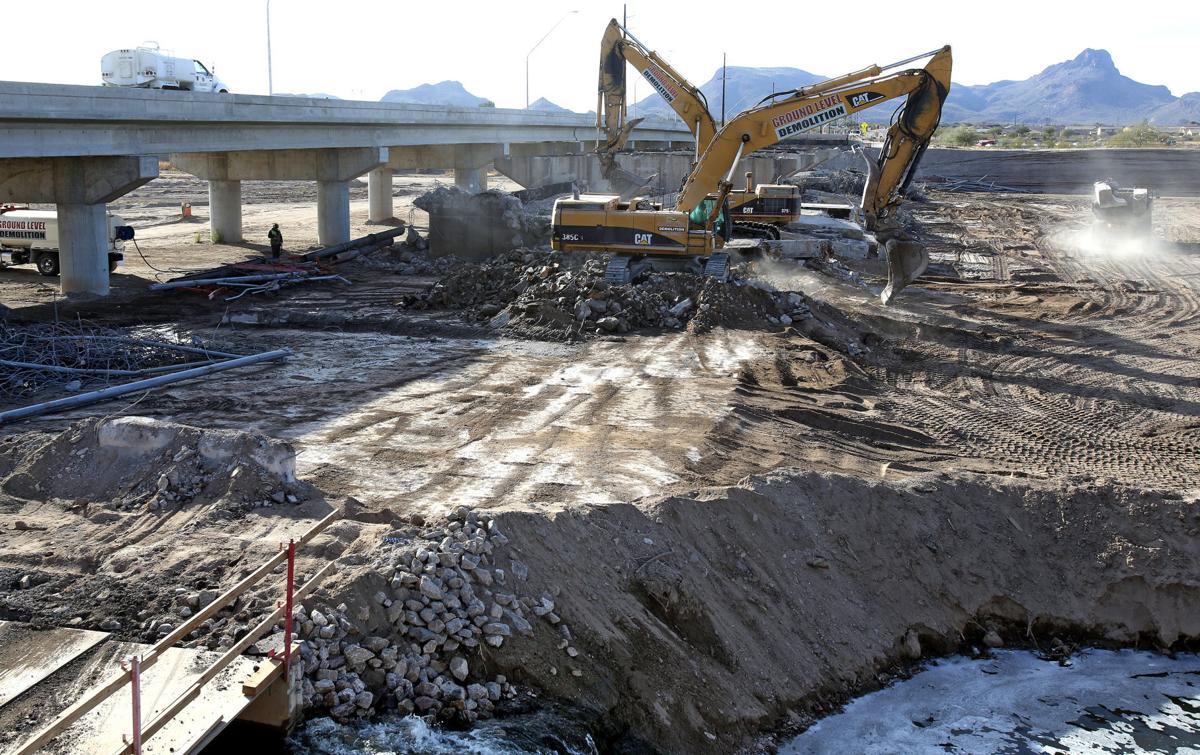It was an interesting year in local transportation news, as well as the first full year for the current Road Runner columnist.
In these pages we’ve explored the ins and outs of the massive RTA plan, shenanigans at gas stations, the massive Ina Road-Interstate 10 interchange project, efforts to repair deteriorating local roads, transit union negotiations, pedestrian safety, bike share, distracted driving and many other transportation-related topics.
But here — in descending order — is what you all were most interested in, at least according to online readership data:
- The Loop and other bike and pedestrian paths
- . The most-read column of 2017 looked at planned improvements to the vast and growing cars-free transportation network around the Greater Tucson Area. There should be some more Loop news early in the new year when the network officially becomes an actual closed loop.
- The runner-up was an overview of the upcoming Downtown Links project, as well as a look at some of the complicated property disputes that sprang up as a result. Officials have told the Road Runner that bids should be coming in soon, meaning work is not too far off. This column will certainly be checking in on the massive undertaking over the coming year.Deadly Interstate 10 dust. One of the most-dangerous stretches of I-10 is an unremarkable half-mile leg just north of Picacho Peak. Blowing dust is the principle culprit in the dozens of wrecks logged there, but in 2017 state officials took steps to address the issue. Dust abatement was carried out on a parcel of land identified as a likely source of the blinding traffic hazard and work has begun on a dust-detection system. The Road Runner will keep an eye on how the efforts go.The Ina Road-Interstate 10 interchange project. This massive, $148-million project got going early last year, as any regular I-10 motorist has noticed. Once complete, Ina will take drivers up and over the Union Pacific Railroad and widened interstate, and be expanded by two lanes in both directions from Silverbell Road to Camino de la Cruz.
- Two new bridges — one of which is already complete — will be built over the Santa Cruz River.
The Road Runner checked in with ADOT spokesman Tom Herrmann to get the latest. In coming weeks, westbound traffic will be shifted from the frontage road to the new eastbound lanes, where eastbound traffic already is. Once that is complete, there will be three lanes of travel in each direction for roughly the next year, according to Herrmann.
The old Santa Cruz Bridge has been taken down, and traffic is now using one of two new bridges. The second will take about a year to construct, Herrmann said.
The whole project is on schedule and completion is anticipated around February or March of 2019, he said.
The Road Runner also checked in with state bat ecologist Joel Diamond, who oversaw a project to move bats living under the old Ina bridge to specialized boxes installed in the new bridge. He said the transition has been smooth and so far “it’s looking like a success.” It’s the low season right now for bats, and the real test will come in the summer when as many as 25,000 Mexican free-tailed bats call the bridge home. The Road Runner will likely check in to see how it’s going.
- And the fifth-best-read column looked at another major interchange project, which is largely wrapped: Ajo Way and Interstate 19. A second phase, which features improvements between Ajo and Irvington Road and elsewhere, has not gone out to bid, according to ADOT’s website.
Knowing what you all are interested certainly helps the Road Runner figure out where to focus his sometimes limited attention. Some of the things on his radar for the coming year are traffic enforcement and the legal consequences of traffic tickets, neighborhood parking programs and the proposed Interstate 11 project, among other things.
But what do you think the Road Runner should look into in 2018? Much of the column’s content comes from readers, so drop a line if you’ve got some ideas.
DOWN THE ROAD
New transit fares take effect Monday, Jan. 1. Cash fares for normal Sun Tran service remains the same — $1.75 — but cash fares for Express Route Service rise to $2.35.
Sun Tran fares paid with SunGO cards are up to $1.60, but include free transfers for two hours. SunLink streetcar 24-hour passes rose to $4.50.
Prices are also up slightly for Sun Van users. For regular service, full fares are $3.20 and low-income fares are $1.60. For riders in optional service areas, those prices are $6 and $4 respectively.
For more details on the changes, go to tinyurl.com/yc2z7vmb





